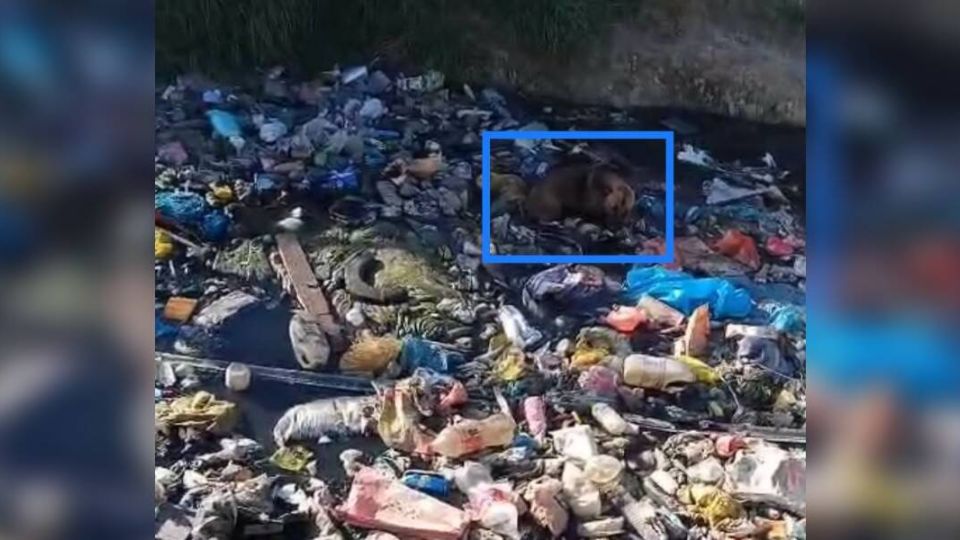
As the sun began to set over Cape Town last Sunday, a flight attendant made her usual walk home through Nomzamo, an area lined with makeshift homes and busy pathways.
The narrow road wound past a polluted canal where locals often discarded trash.
The smell of rot hung in the air, and murky water crept between piles of discarded plastic, food wrappers, and debris.
A Flight Attendant’s Discovery Leads To A Remarkable Rescue
Out of habit, she kept her eyes down to avoid the sludge. But that evening, something stirred in the corner of her vision.
Among the floating waste, a patch of brown fur shifted slightly. She froze. It was a dog — half-submerged, trembling, and too weak to climb out.
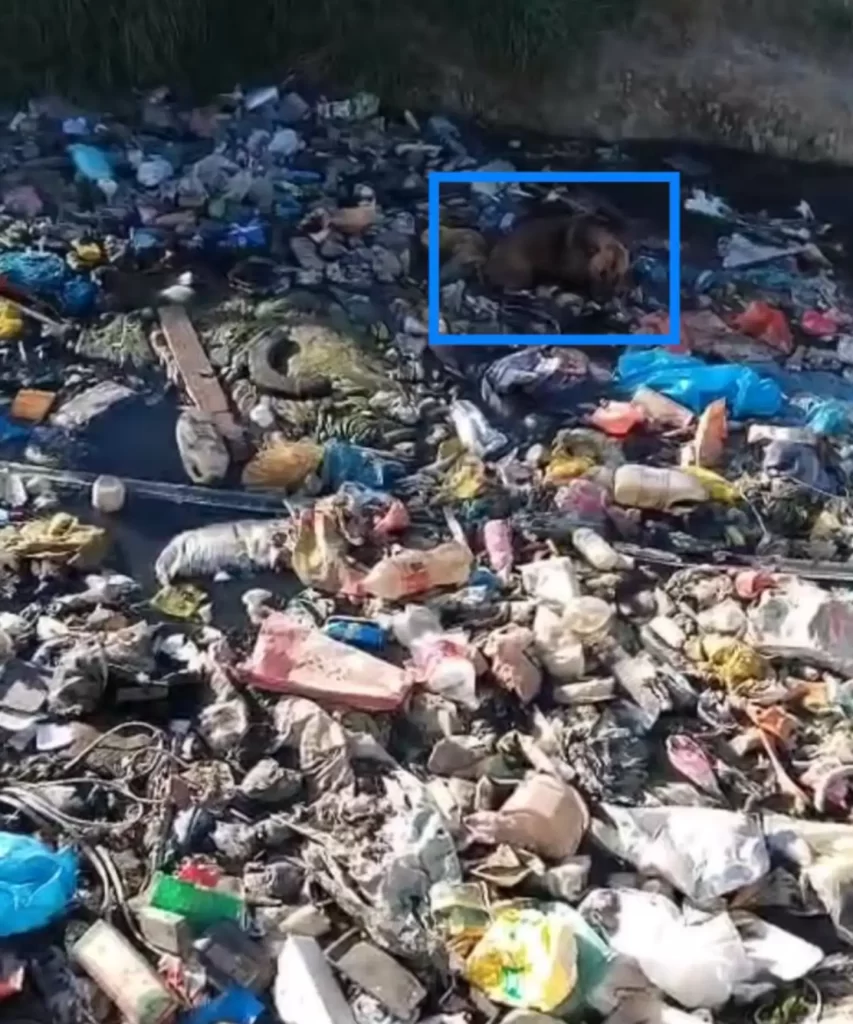
Her heart sank as she realized she had seen the same animal that morning on her way to work. That meant the dog had been stuck there for nearly a full day. His head drooped, and his body quivered with exhaustion.
The woman didn’t think twice. Pulling out her phone, she began calling every animal rescue number she could find, hoping someone would answer before it was too late.
The Rescue In The Muck
One of those calls reached Kyle Girodo, an inspector from Animal Welfare Helderberg.
The moment he heard about the situation, he threw on his rain boots, grabbed a towel, and drove 20 minutes through the outskirts of Cape Town to Nomzamo.
The flight attendant met him at the roadside and led him down a dirt path to the stagnant canal.
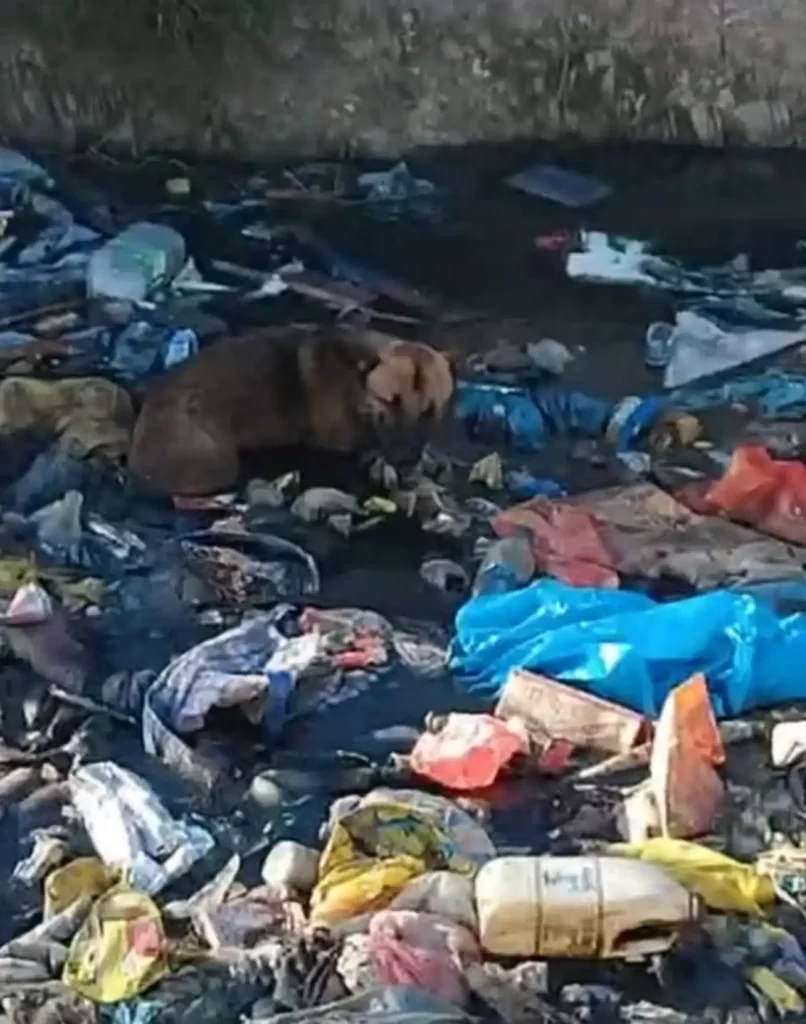
The stench was overwhelming. The narrow waterway wasn’t just filled with garbage — it was thick with sewage, old food, and human waste.
Girodo later described it as “everything imaginable dumped in one place.” Yet, without hesitation, he waded into the knee-deep filth.
His boots filled with the foul water almost instantly, but he pressed forward until he reached the trembling animal.
The dog, terrified and unsure of the stranger approaching, showed his teeth in warning. Girodo knew that fear could easily turn to aggression, but he didn’t back off.
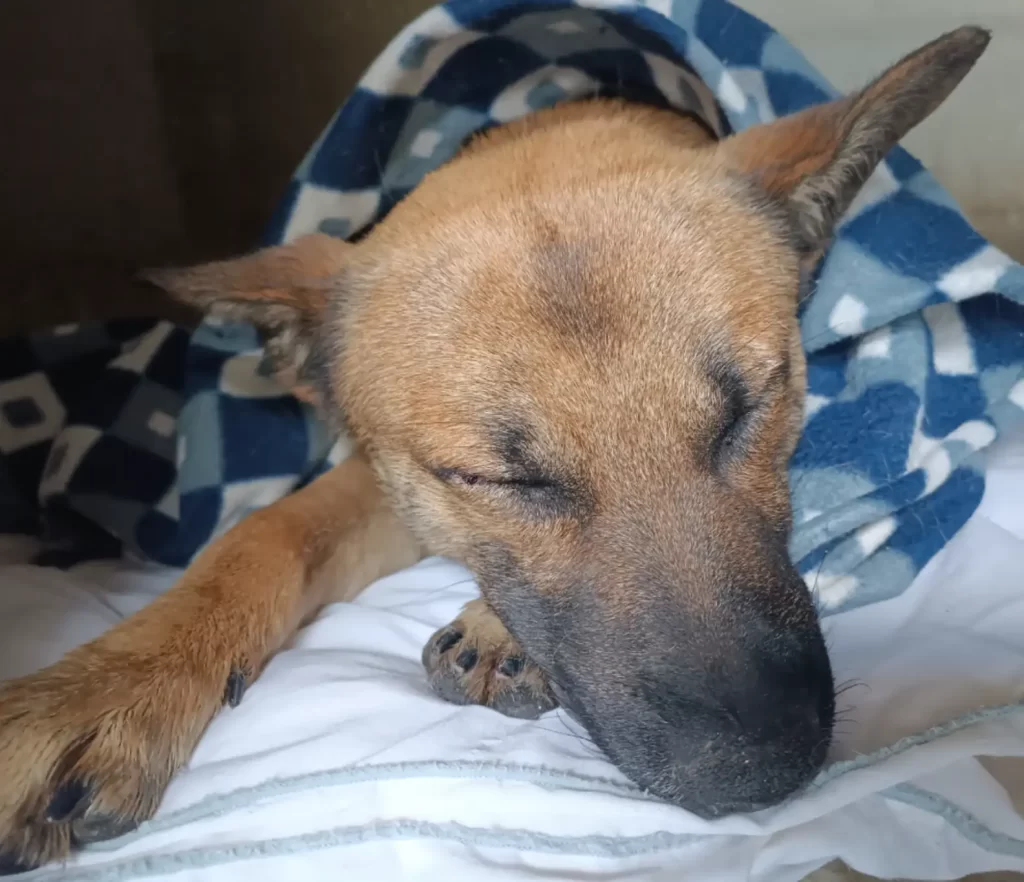
“I just covered him gently with the towel,” Girodo later recalled. “When I picked him up, he stopped shaking. It was like he finally realized someone was there to help.”
Holding the dog tightly against his chest, Girodo trudged back through the thick muck toward dry ground. The dog’s body went limp in his arms — not out of defeat, but in relief. For what was likely the first time in his life, he was safe.
They named him Moose.
Back at the rescue vehicle, Girodo dried Moose with towels and wrapped him in blankets to prevent shock. It was already dark when they reached the Animal Welfare Helderberg hospital, where staff stayed late to get him settled.
Moose devoured a full meal before curling up in a warm bed for the night. The smell of sewage still clung to his fur, but at least he was clean, fed, and alive.
A New Beginning For Moose
By the next morning, Moose looked like a different dog. Volunteers bathed him thoroughly, scrubbing away the filth that had clung to him for so long.
The team couldn’t help but laugh when the entire hospital filled with the stench from his soaked fur — a reminder of what he’d survived.

Under South African animal control laws, rescued dogs must remain in shelter care for ten days before they can be adopted. During this period, Moose received medication to protect him from infections caused by the sewage water.
Gradually, his energy returned.
At first, Moose was hesitant to let people near his face. He flinched when someone reached out and sometimes curled his lip in uncertainty. But the staff saw something special in him — he didn’t lash out or bite. He was cautious, but never cruel.
“In areas like Nomzamo, dogs are usually kept for protection, not companionship,” Girodo explained. “Many never experience kindness. That’s why seeing Moose begin to trust is incredible.”
Day by day, Moose’s fear began to fade. Volunteers spent time sitting quietly beside him, offering gentle words and slow, patient gestures.
They watched as his eyes softened and his tail began to wag when familiar faces entered his kennel.
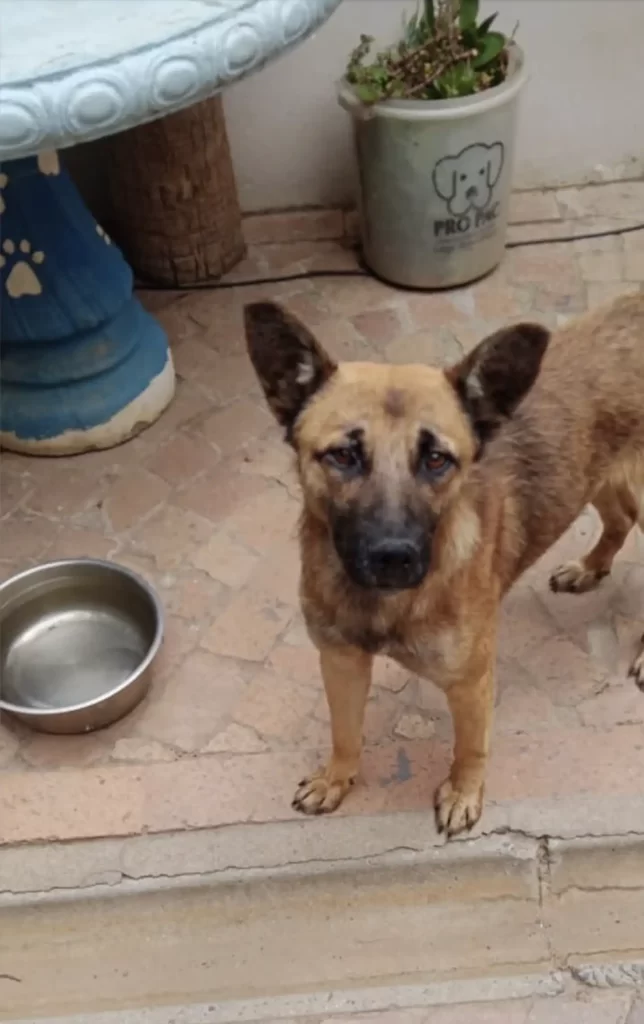
Next, the team planned to introduce Moose to other dogs at the shelter to help him socialize.
They believed that spending time with friendly animals would show him that not every sound or touch meant danger. “Once we see who he gets along with,” Girodo said, “he’ll get outdoor playtime and more chances to build confidence.”
Though his past remains a mystery, it’s clear Moose’s life is finally changing. What began as a desperate struggle in a filthy canal has turned into a story of resilience — a reminder that even in the darkest corners of neglect, compassion can find its way in.
Today, Moose rests in the care of Animal Welfare Helderberg, surrounded by people who see him not as a guard dog, but as a soul worth saving.
His journey from fear to trust is still unfolding, but his rescuers are confident he’s on the path toward a loving home.
For Girodo, the rescue wasn’t just another call. It was a moment that reminded him why he does what he does — to give animals like Moose a chance at the kind of life they’ve never known.
“From what I’ve seen,” Girodo said, “he’s doing wonderfully.”
